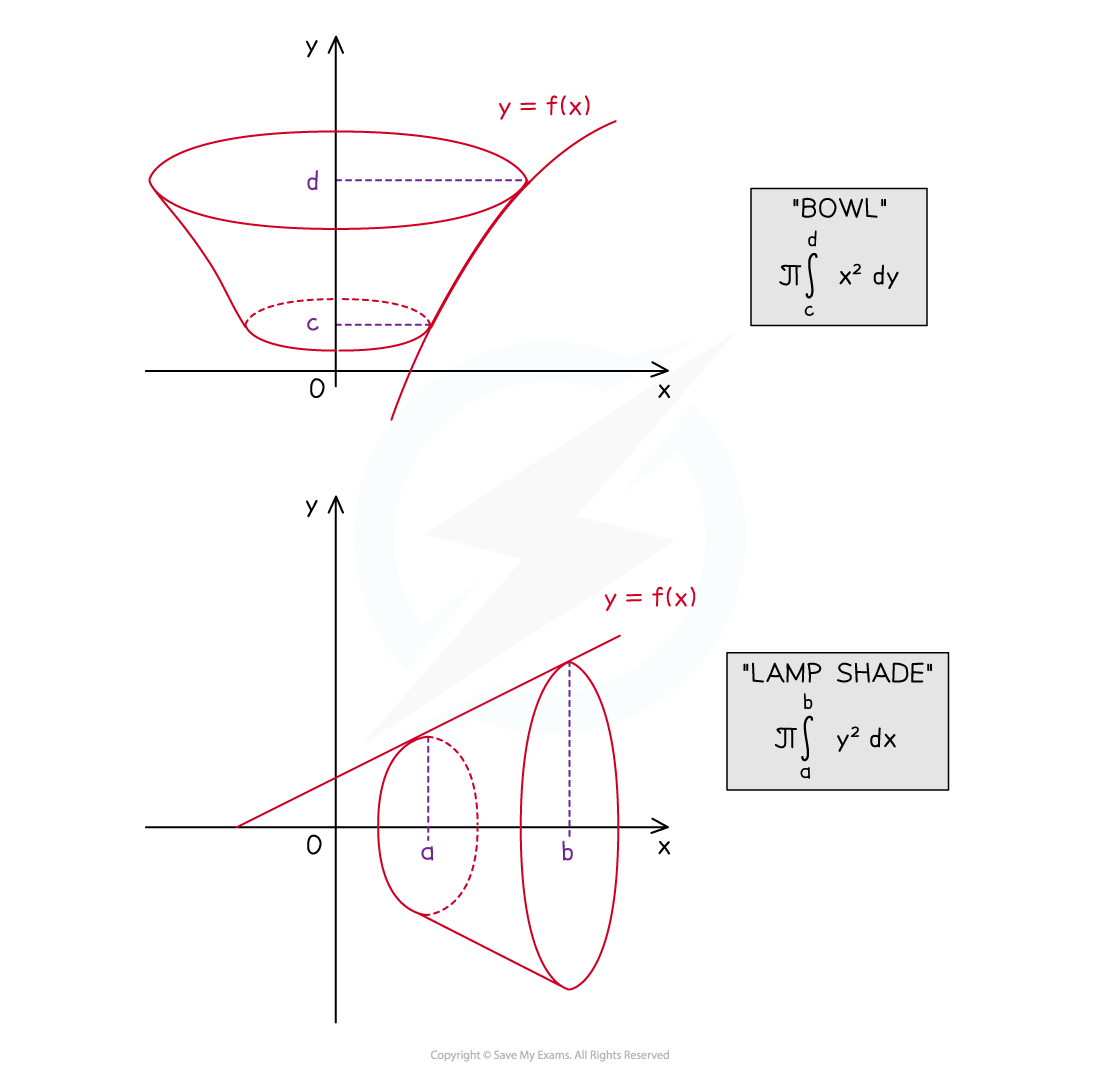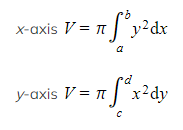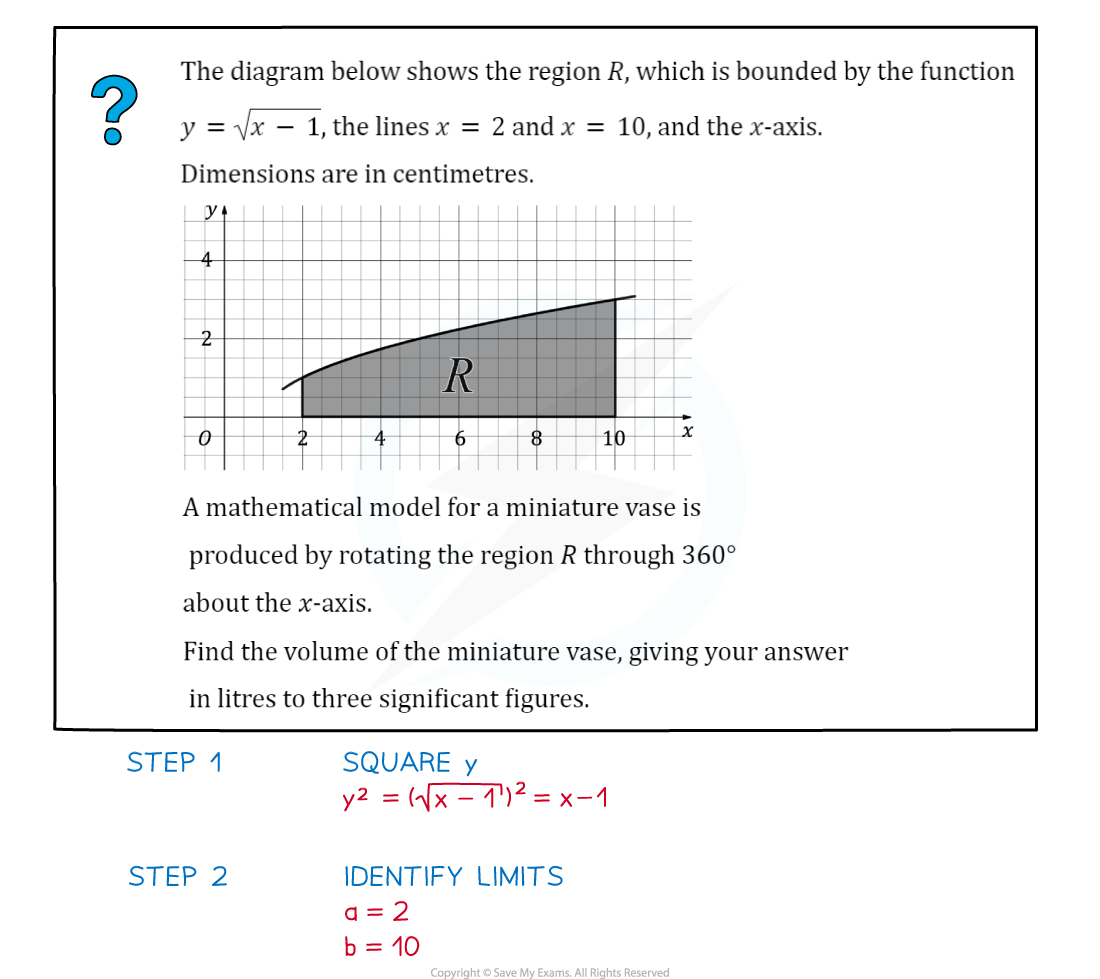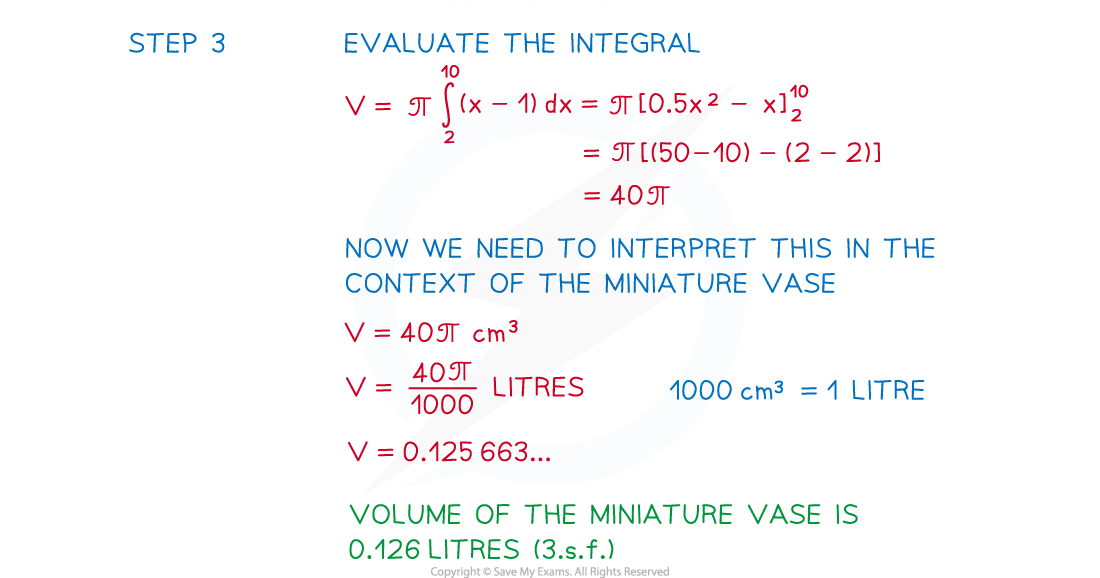- 翰林提供学术活动、国际课程、科研项目一站式留学背景提升服务!
- 400 888 0080
CIE A Level Maths: Pure 1复习笔记6.2.6 Modelling with Volumes of Revolution
Modelling with Volumes of Revolution
What is meant by modelling with volumes of revolution?
- Many every day objects such as buckets, beakers, vases and lamp shades can be modelled as a solid of revolution
- This can then be used to find the volume of the solid (volume of revolution) and/or other information about the solid that could be useful before an object is manufactured
- Modelling with volumes of revolution could involve rotation around the x-axis or y-axis so ensure you are familiar with both

What modelling assumptions are there with volumes of revolution?
- The solids formed are usually the main shape of the body of the object
- For example, the handles on a vase would not be included
- The lip on the top edge of a bucket would not be considered
- A common question or assumption concerns the thickness of a container
- The thickness is generally ignored as it is relatively small compared to the size of the object
- thickness will depend on the purpose of the object and the material it is made from
- Some questions may refer to the solid formed being the ‘inside’ of an object or refer to the ‘internal’ dimensions
- If the thickness of the material is significant it would involve two related solids of revolution (Adding & Subtracting Volumes)
- The thickness is generally ignored as it is relatively small compared to the size of the object
How do I solve modelling problems with volumes of revolution?
- Visualising and sketching the solid formed can help with starting problems
- Familiarity with applying the volume of revolution formulae for rotations around both the x and y axes

- The volume of a solid may involve adding or subtracting different volumes of revolution
- Subtraction would need to be used for solids formed from areas that do not have a boundary with the axis of rotation
- Questions may go on to ask related questions in context so do take notice of the context
- A question about a bucket being formed may ask about its capacity
- This would be measured in litres so there may also be a mix of units that will need conversion (e.g. 1000cm3 = 1 litre)
Worked Example


Exam Tip

转载自savemyexams


最新发布
© 2025. All Rights Reserved. 沪ICP备2023009024号-1








